in the phenomenon known as pareidolia, we might see and hear exactly what we expect to see and hear.
Previously: Ouija Boards And The Ideomotor Result.
Until fairly recently, I had no idea what a spirit box even was, let alone how spirit boxes really work. After finding myself in close proximity to 1 during a nighttime spent at a reportedly haunted house, though, I finally got the chance to witness one in action — and although I'd originally intended this "How Does It Work?" feature to focus on methods of divination, it occurred to me that information technology might be useful to aggrandize the telescopic of it a flake. And so, here we are: Spirit boxes, what they are, and how they work — depending on who y'all talk to, of course.
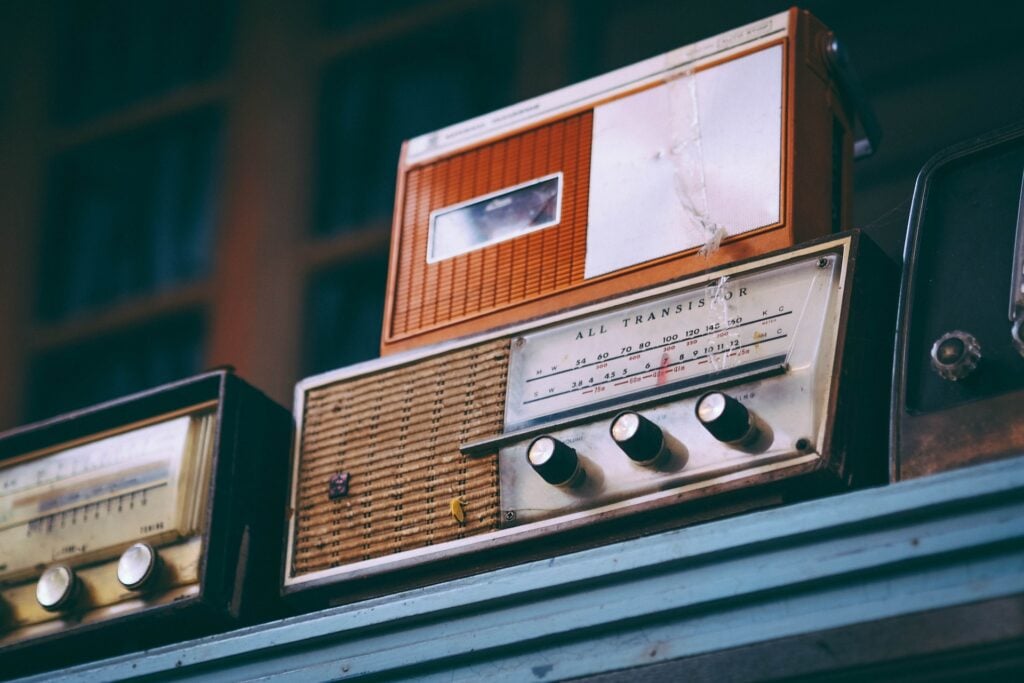
Spirit boxes autumn under the heading of ITC, an acronym that can correspond either Instrumental Transdimensional Communication or Instrumental Transcommunication. (Coinage of the latter is usually credited to German physicist Ernst Senkowski.) You'll see both terms used in reference to information technology out in the wild, simply they both mean pretty much the same thing: Using electronic devices in order to communicate with or otherwise contact paranormal entities. Every bit Karen Stollznow noted in the Skeptical Inquirer in 2010, these devices are typically "standard machines used in nonstandard ways"; anything from voice recorders to televisions might be employed in ITC. (Sound familiar?)
[ Like what yous read? Check out Unsafe Games To Play In The Dark,available from Relate Books now! ]
Spirit boxes stand out from the oversupply in that they're specifically engineered to contact paranormal entities — that is, when you lot utilise one, you're non using it in a "nonstandard" way; yous're using it for its intended purpose — simply they're built from components meant to exist used in other means, so in that sense, they tin can still be said at least partially to be nonstandard usage of a standard device. They're radios, substantially — merely modified radios. Radios that do things that regular radios don't. Radios that purportedly let the dead to communicate with the living.
As you lot might await, spirit boxes are quite recent inventions; they rely on radios, and given that the first human vocalisation wasn't transmitted via radio until the early 20th century… well, allow's only say that it took a while for the applied science that makes spirit boxes possible to become readily accessible — and even longer for someone to try to harness it as a method for contacting paranormal entities.
But neither practise spirit boxes exist in a vacuum. Let'southward first by taking a wait at the history of the device.
A Brief History Of Spirit Boxes
In order to talk almost spirit boxes, nosotros need to talk about Electronic Phonation Phenomena, or EVP. If yous're even just passingly familiar with paranormal investigation methods, you probably know what EVP is; information technology refers to audio recordings that claim to feature the voices of spirits or other paranormal entities, particularly when those voices weren't audible to humans present in the space at the fourth dimension the recording was taken. As with all things paranormal, there are believers and skeptics of EVP; believers are positive that what they're hearing on the recordings are paranormal in nature, while skeptics are just equally positive that it'southward feedback, or radio interference, or simply the misinterpretation of a audio produced by perfectly natural means.
The first spirit voice recording was reportedly captured in the 1940s by Reverend Drayton Thomas. During a séance with medium Gladys Osborne Leonard, Thomas recorded the disembodied voices that emerged throughout the session; he later identified 1 of them as his deceased male parent. Voila: Spirit recording.
Around the aforementioned time, photographer and alleged psychic Attila von Szalay began experimenting with methods of recording the voices of spirits. With Raymond Bayless, he first tried using a 78 RPM Pack-Bell record-cutter and player; nonetheless, this method was hard to acquit off and failed to produce the results for the pair were hoping. When they created a sort of cabinet equipped with a microphone and speaker trumpet, with a line running out of the cabinet connecting to a tape recorder and speaker, though? That worked, they claimed. The person inside the cabinet couldn't hear what the spirits were seemingly communicating, but when the recordings were played back, voices and messages seemed to appear there.
In 1959, Swedish filmmaker, opera singer, and bird-watcher Friederich Jurgenson constitute that several recordings he had fabricated of wild bird songs also independent strange voices — man ones, he thought. He later admitted that he had been attempting to record EVP for some time, so the fact that these voices were allegedly nowadays didn't surprise him; regardless, though, he considered it a success and continued to explore the phenomenon for many years. In 1968, a Latvian psychologist Jurgenson had worked with, Konstantin Raudive, published the volume Breakthrough: An Amazing Experiment in Electronic Advice with the Expressionless detailing many of the discoveries fabricated since Jurgenson's initial recording. EVP are sometimes chosen "Raudive voices" as a result.
But as fascinating as all of these spirit recordings were, they had one major limitation as a ways of communication: They had to exist performed on a delay. These recordings didn't allow you to antipodal with any entities in the moment; you could only hear any letters they may have tried to requite you lot after on equally you played dorsum the recording.
The spirit box, all the same, takes the whole idea a step further: It purports to let you lot communicate with spirits in real time.
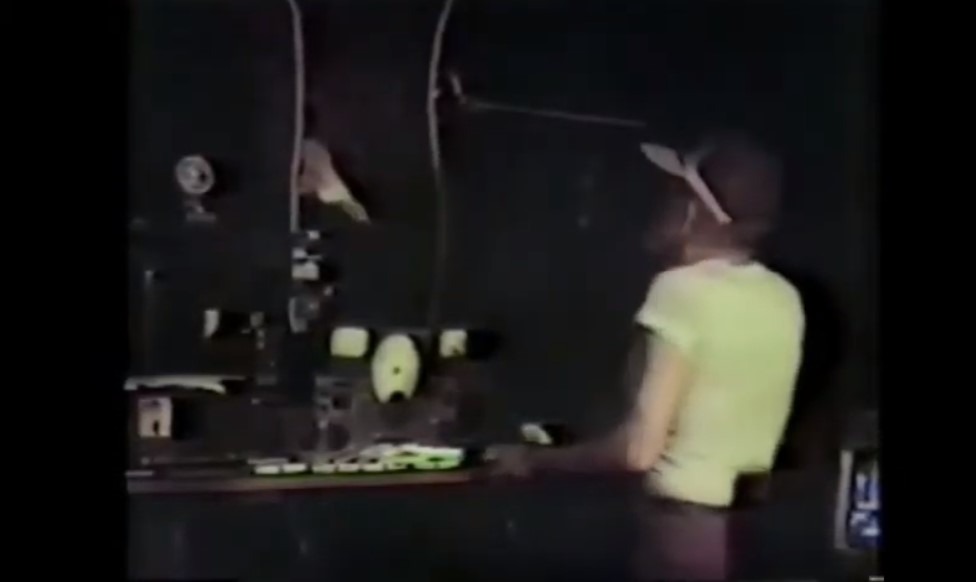
The first device created that claimed to allow for real-time, two-way advice with paranormal entities is generally considered to be the "Spiricom." Developed in the belatedly 1970s and early '80s by William O'Neil and George Meek this device consisted of a radio transmitter and receiver with 13 tone generators that covered the range of an adult male vocalism. The prove they presented as having been discovered using this device was extraordinary; however, many now believe the Spiricom to have been a hoax. Methodist minister Dr. Terrance Peterson, for example, reported a thorough debunking of the story in a 1987 issue of FATE Mag. Scientific investigator Dr. Stephen Rorke remains similarly unconvinced, as covered by a 2006 episode of the long-running radio bear witness Coast to Coast. Inconsistencies in O'Neil and Meek's story, combined with evidence that O'Neil was skilled in ventriloquism, suggests that the "prove" they gathered may accept been fabricated. Even if they were telling the truth, though, the device seemed simply to work for them: O'Neil and Meek fabricated the plans for their device freely bachelor, only no one else e'er managed to replicate their results.
Then came Frank's Box.
In 1995, the magazine Popular Electronics' October issue included a piece titled, "Are The Dead Trying To Communicate With Us Through Electronic Ways? Try These Experiments And See For Yourself." So, in the early 2000s, Frank Sumption did just that — and he ended up DYI-ing the first version what'south now called a spirit box. Known equally Frank's Box, Sumption's invention is basically a domicile-brewed radio receiver with the browse lock part disabled. Th consequence is that the box continually scans AM or FM radio frequencies without ever locking onto a specific station. Theoretically, spirits can and so utilize these frequencies to communicate with the living.
Every bit Tim Woolworth wrote at ITC Voices in 2010, early versions of Frank's Box used "a white dissonance generator, which fed a random voltage generator, which in turn was connected to a pre-built AM/FM tuner from a motorcar stereo system." Woolworth elaborated, "As the random voltage was fed through the arrangement, the frequencies on the tuner would jump all around in plough. The rate at which these frequencies jumped was later controllable by a rate knob." In 2007, though, a fellow member of Sumption's EVP-ITC forum suggested using "a linear sweep with a charge per unit adjustment," thereby assuasive the device to sweep tuner frequencies continuously — and with that development in place, the spirit box began to take off.
Since then, a wide variety of spirit boxes have been created, from "Shack Hack" models — simply modified Radio Shack radios — to custom-built devices. Over the by decade or so, they've become an essential tool for many paranormal researchers (although it'south too worth noting that fifty-fifty among the paranormal community, the boxes are somewhat controversial — non anybody buys them as legitimate ITC devices).
Then: How do they work? Well, that depends on how yous feel well-nigh ghosts. There are, as always, ii sides to examine, and then let'southward take a look at both.
The Believer'south Argument
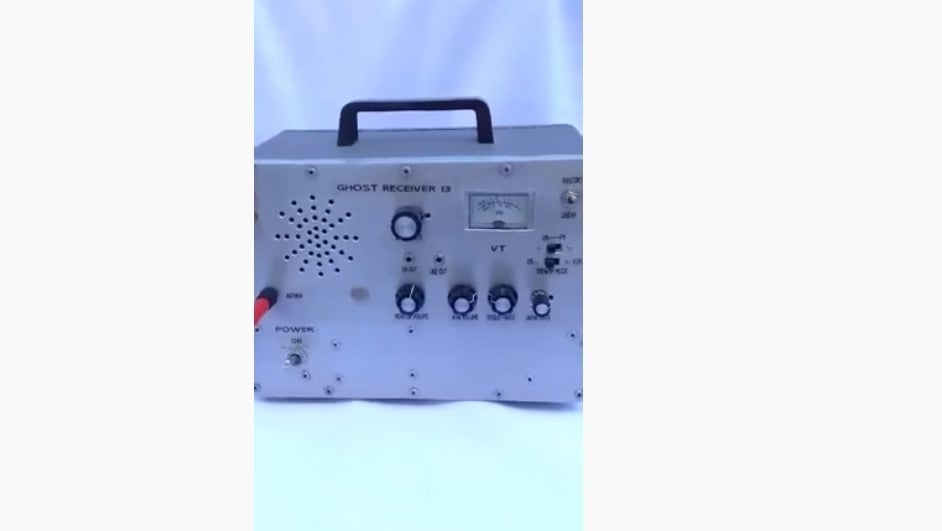
Frank Sumption called the noises his box produced "raw sound," which he divers as "the raw material out of which spirits of the deceased and other entities … create their own voices" — essentially, he believed spirits could use the white dissonance and other radio noises provided by the box to "speak" to the living. He further elaborated that they "presumably" achieved this feat by "re-modulating and remixing the raw audio to make the diverse noise fragments from words and voices of their choosing." More than from Sumption, via Skepticblog:
"In the box, the raw sound is created by sweeping the tuning of a radio electronically across its band, or tuning range, the resulting $.25 of spoken communication music and dissonance are the raw audio. Radio is simply a user-friendly source of raw sound."
He did, however, annotation that this caption was but a judge; he acknowledged that there might be other ways the box works, likewise — an "RF component," for case, or "an actual point received," or "some other method of getting an external vocalism into the radio in the box." He added, "Some of the manipulation of the raw audio seems to accept identify inside the electronics, over again, presumably ― they can manipulate the electrical signals," simply ended, "I don't have the equipment or know-how to be able to test these ideas."
A user of Sumption's EVP-ITC forum (via the Skeptical Inquirer) farther noted that no 1 "really [knows] how the spirit box works"; they "simply [know] that information technology does seem to work." He had some theories, though:
"In EVP nosotros take at least two major theories. In the EM (Electromagnetic) theory, we assume that the spirits are communicating with voice modulated EM waves — either via a kind of 'radio technology' or the 'fact' that sound waves from the other side are electromagnetic relative to our ain universe. This explains why we oftentimes need a device like [an] electric sound recorder to hear the waves.
"The other major theory, and the 1 I subscribe to, is that the voices are made from existing background sounds. This is sorta like using an electronic [larynx] or property an electric razor to one's lips and 'mouthing' words. The vocal [apparatus] changes shape and resonance characteristics, making a sufficiently randomized sound (like a buzzing razor) sound like words. Spirits may exercise something similar, near an EVP recording microphone, either 'semi-[manifesting]' a song apparatus or by utilizing some of their own audio altering technology."
According to this user, either the spirits are sending radio waves carrying messages from their ain universe to ours through the radio in the spirit box, or they're taking the sounds created directly past the spirit box'due south radio and manipulating them — what I recollect Frank Sumption meant when he talked well-nigh the spirits using the "raw noise" to make voices for themselves.
Some paranormal researchers farther separate the types of reception that might come though on a spirit box into different types. For example, in another piece published at ITC Voices in 2014, Tim Woolworth described what he believes to exist the two principal types in detail. 1, which he calls "fragmentative reception," is evidently more than common, although less desirable due to its vague nature; he describes it as follows:
"The time that a ghost box remains on a singular frequency is known as the sweep rate. As the radio passes over the frequency steps during a sweep, a sound fragment comes through; the box will remain on that frequency for a time determined by the box itself. Based upon the sweep rate of the box, that fragment can be a whole discussion(south), or it may only be a phoneme(due south) or morpheme(s) (a phoneme is the smallest singular sound that is recognizable past the human ear, such as the "r" in rat; a morpheme is the smallest group of sounds that convey meaning, such equally the "-ed" in "talked"). As the frequencies continue to browse at a rapid rate, these words, phonemes and morphemes tin can combine to form words and phrases that are direct communications."
Of import to notation is that, with fragmentative reception, all the parts of a word, phrase, or sentence may non come up from the aforementioned voice.
The second type according to Woolworth is "quantum reception." Characterized by "the lack of fragmented syllables and radio sweeping noise," breakthrough reception typically communicates letters that are "very articulate and [stand] alone." The voices heard "stand out in a higher place the sweep" and usually "formulate a comprehensible phrase"; additionally, the responses are often intelligent, every bit opposed to random.
At that place doesn't seem to be a wide consensus among believers on exactly how spirit boxes work — just many are convinced of the devices' efficacy still.
The Skeptic'due south Argument
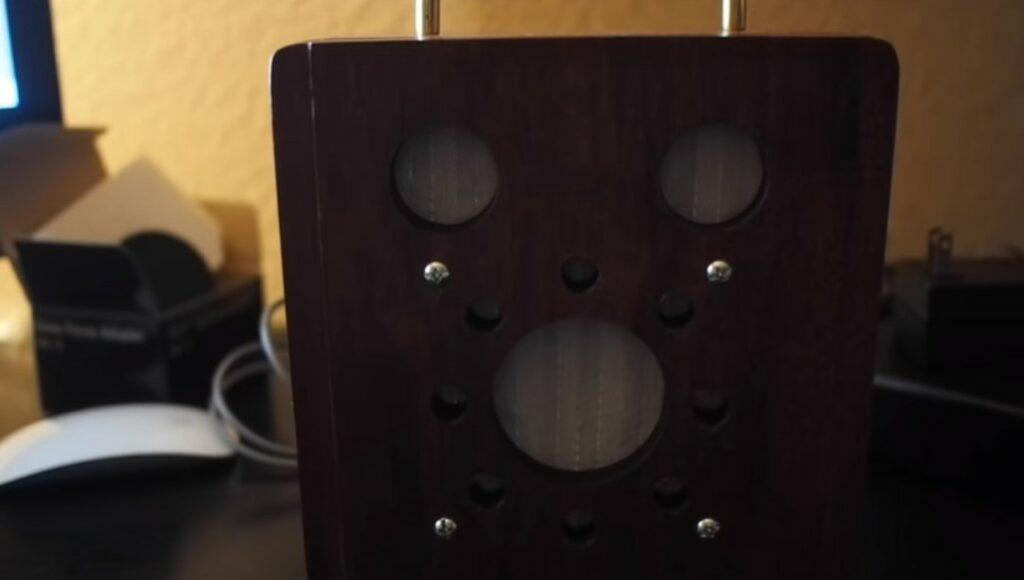
Remember pareidolia? We talked a lot about information technology final year in conjunction with the "Dear David" story. Get set up to revisit it, because information technology turns out to be relevant hither, too.
In case y'all need a refresher, pareidolia refers to the tendency humans have to interpret random stimuli as significant — that is, we like to assign meaning to things that are actually meaningless. (If you're familiar with the more general term apophenia — our tendency to find patterns in random data — pareidolia is a type of apophenia.) The Rorschach test, which asks us to describe what we see in random ink blots, relies on pareidolia; so, as well, does the novelty Twitter business relationship Faces In Things. It's something we're capable of doing almost since nascency: According to one study, pareidolia has been observed in infants as immature as eight months. According to Live Science, the give-and-take derives from the Greek para, or faulty or wrong, and eidolon, or image or shape — when we feel pareidolia, we're literally seeing "the incorrect shape."
But pareidolia isn't just limited to images or pictures; auditory pareidolia is a thing, as well — and for those who remain skeptical of spirit boxes and other audio ghost phenomena, it offers a logical explanation for what might really exist going on.
As Steven Novella wrote at Skepticblog in 2012, "ii layers of pattern recognition" occur when nosotros listen to a spirit box. "The first layer is hearing words, names, or phrases," said Novella. "Sometimes the words are actual words coming through from a radio station. Sometimes, yet, they are only racket that the brain tries to friction match to a word." The second layer, meanwhile, is virtually ascribing meaning to the words people perceive from the first layer. "People are very expert at inferring meaning, which is a useful skill in a highly social species," wrote Novella, citing how people tend to "assign very sophisticated human understanding and intent to behaviors" from their pets "that probably have a much simpler explanation," as well every bit in the research conducted effectually teaching apes to use sign language. "Like many such things," said Novella, "we are too proficient in that we tend to over-infer meaning." Thus, random noise or radio signals becomes "Dead. Tribute" and "But get me out of this wall."
Sounds don't even need to exist fabricated by humans in society for us to perceive something man almost them. A study published in the journal Science in 1981, for example, tested how well participants could sympathise synthetically produced voice communication stimulus that sounded nothing like the sounds humans actually make. The researchers plant that people can empathize linguistic letters even "in the absenteeism of traditional acoustic cues for phonetic segments."
When Philip Jaekl spoke to written report lead Robert Remez for Nautilus in 2022 almost exactly how it is that non-human noises might interpret as homo in our perception of them, Remez suggested that information technology might be a sort of "sensory action 'spill-over'" from the auditory system that recognizes specific sounds into the parts of the nervous system that procedure oral communication and language. "And that spillover doesn't require similarity," said Remez. "It merely requires some kind of shared activity." The example Jaekl and Remez focused on involved someone who swore they heard people talking in the noise coming from their air conditioner — merely from there, it's easy to make the same inference about white dissonance or radio sweeping sounds.
And, of course, information technology'due south worth remembering that when we're primed to expect something paranormal, nosotros're much more than likely to experience something we consider paranormal. If yous believe in ghosts and you lot heed to a spirit box, you'll likely hear something that makes sense; however, if you don't believe in ghosts, you'll probably just hear dissonance.
What Do You Believe?
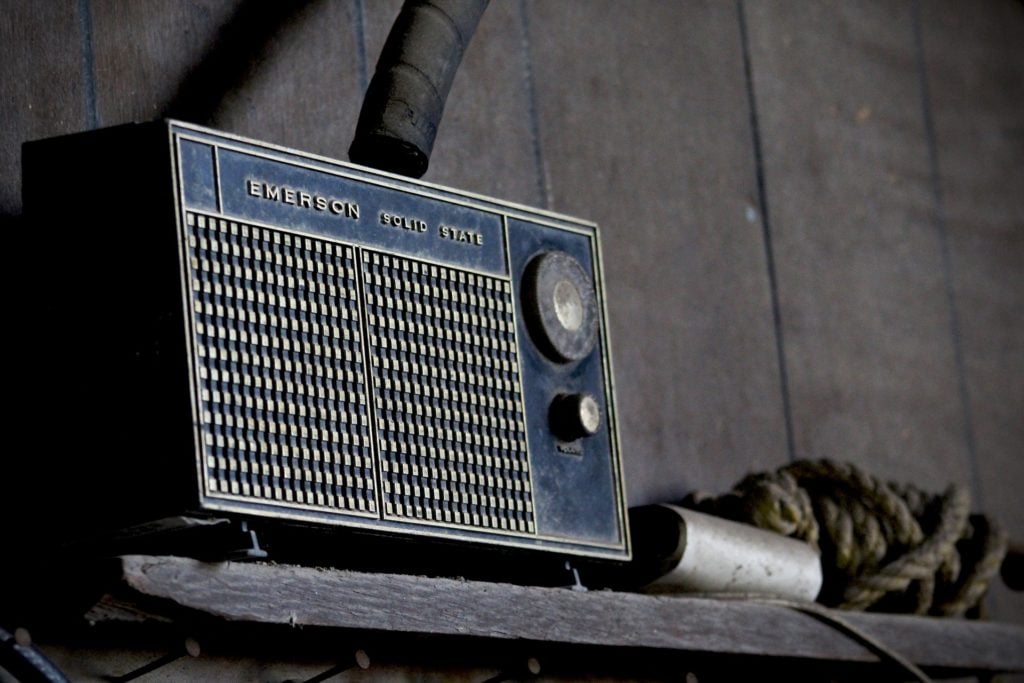
Here's the thing: You don't have to ascribe wholly to ane argument or the other. You can believe both.
The bearding writer behind the website The Spirit Box: My Spiritual Journey had something interesting to say about that subject area. On their page about how to employ a spirit box, they write that they "obviously … believe that we can indeed communicate with those who have crossed" through spirit boxes — merely also stress the importance of learning about pareidolia before you carry whatever spirit box sessions. "I do non believe that every sound that is heard on the box is spirit communication," they write. Some of it could very well exist, and indeed, they believe a lot of it is — only, they say, it'southward as well certainly possible that a lot of sounds ascribed to paranormal activity could very well but be pareidolia.
Me? I'k not certain where I fall. Regardless, though, I will concede that spirit box recordings are eerie every bit hell.
Maybe literally.
***
Support The Ghost In My Machine on Patreon for behind-the-scenes admission and bonus content. You can besides follow on Twitter @GhostMachine13 and on Facebook @TheGhostInMyMachine.
[Photo via igorovsyannykov, Pexels/Pixabay; Paranormal Research Association, Hultay Paranormal, Huff Paranormal/YouTube]
scottbuthadou1985.blogspot.com
Source: https://theghostinmymachine.com/2018/11/19/how-does-it-work-spirit-boxes-itc-and-auditory-pareidolia-evp-electronic-voice-phenomenon-phenomena-franks-box/
0 Response to "in the phenomenon known as pareidolia, we might see and hear exactly what we expect to see and hear."
Post a Comment